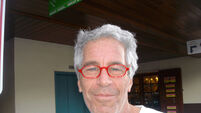US plays down mad cow disease risk
Food safety experts played down the risk of mad cow disease entering America's food supply, a day after a government agency detected the first new case of the disease in the US since 2006.
It was the fourth BSE case discovered in the country and no human version of the illness has been linked to eating US beef.
"What we know is that 3,000 Americans die every year from preventable food-borne illnesses that are not linked" to mad cow disease, said Sarah Klein of the consumer advocacy group Centre for Science in the Public Interest.
"Things like E. coli, salmonella - that's where we should be focusing our attention, outrage and policy."
Two major South Korean retailers suspended sales of US beef in response. But reaction elsewhere in Asia was muted, with Japan saying there was no reason to restrict imports.
"From simply a public health issue, I put it very, very low," Cornell University food safety expert Martin Wiedmann said of the level of concern about the disease.
Maintaining confidence in exports fuelled the nation's monitoring of the beef supply as much as continuing safety concerns, he said.
Tuesday's news came from that monitoring. Routine testing of a dead dairy cow from central California showed the animal had bovine spongiform encephalopathy or BSE, a disease that gradually eats holes in the animal's brain.
US health chiefs were adamant that there was no risk to the food supply - the cow was never destined for the meat market, and the World Health Organisation says humans cannot be infected by drinking milk from animals with BSE.
The US has been guarding against BSE for years since a massive outbreak in Britain that not only decimated that country's cattle but showed that eating BSE-contaminated meat could trigger a human version of the disease.
A key part of the safety net are that the animal tissues that can carry the BSE - including the brain and spinal cord - are removed from cattle before they are processed for food.
Tests are performed on only a small portion of dead animals brought to the transfer facility in central California.
The cow had died at one of the region's hundreds of dairies, but had not exhibited outward symptoms of the disease - unsteadiness, inco-ordination, a drastic change in behaviour or low milk production, officials said.
But when the animal arrived with a truckload of other dead cows on April 18, its 30-month-plus age and fresh corpse made it eligible for United States Department of Agriculture (USDA) testing. Experts say it takes at least that long for the disease to develop.
The samples went to the food safety lab at the University of California, Davis on April 18. By April 19, markers indicated the cow could have BSE. It was sent to the USDA lab in Iowa for further testing.
On Tuesday, agriculture chiefs announced that the animal had atypical BSE. That means it did not get the disease from eating infected cattle feed, said John Clifford, the Agriculture Department's chief veterinary officer.
It was "just a random mutation that can happen every once in a great while in an animal," said Bruce Akey, director of the New York State Veterinary Diagnostic Laboratory at Cornell University. "Random mutations go on in nature all the time."
In humans, experts say the disease can occur in one in a million people, causing sponge-like holes in the brain. But they say not enough is known about how and how often the disease strikes cattle.
The disease cannot be transmitted by contact among cows and experts say it is unclear whether this rare type of BSE has ever been transmitted from a cow to a human by eating meat.
Among the unknowns about the current case is whether the animal died of the disease and whether other cattle in its herd are similarly infected. The name of the dairy where the cow died has not been released, and officials have not said where the cow was born.
The infected cow was identified through an Agriculture Department surveillance programme that tests about 40,000 cows a year for the fatal brain disease.
There have been three confirmed cases of BSE in cows in the United States - in a Canadian-born cow in 2003 in Washington state, in 2005 in Texas and in 2006 in Alabama.
Both the 2005 and 2006 cases were also atypical varieties of the disease, USDA officials said.
The mad cow cases that plagued the UK in the early 1990s were caused when livestock were routinely fed protein supplements that included ground cow spinal columns and brain tissue, which can harbour the disease.
The Agriculture Department is sharing its lab results with international animal health officials in Canada and Britain who will review the test results, Mr Clifford said.
State and federal agriculture officials plan to test other cows that lived in the same feeding herd as the infected bovine, said Michael Marsh, chief executive of Western United Dairymen, who was briefed on the plan. They also plan to test cows born at around the same time as the diseased cow.













